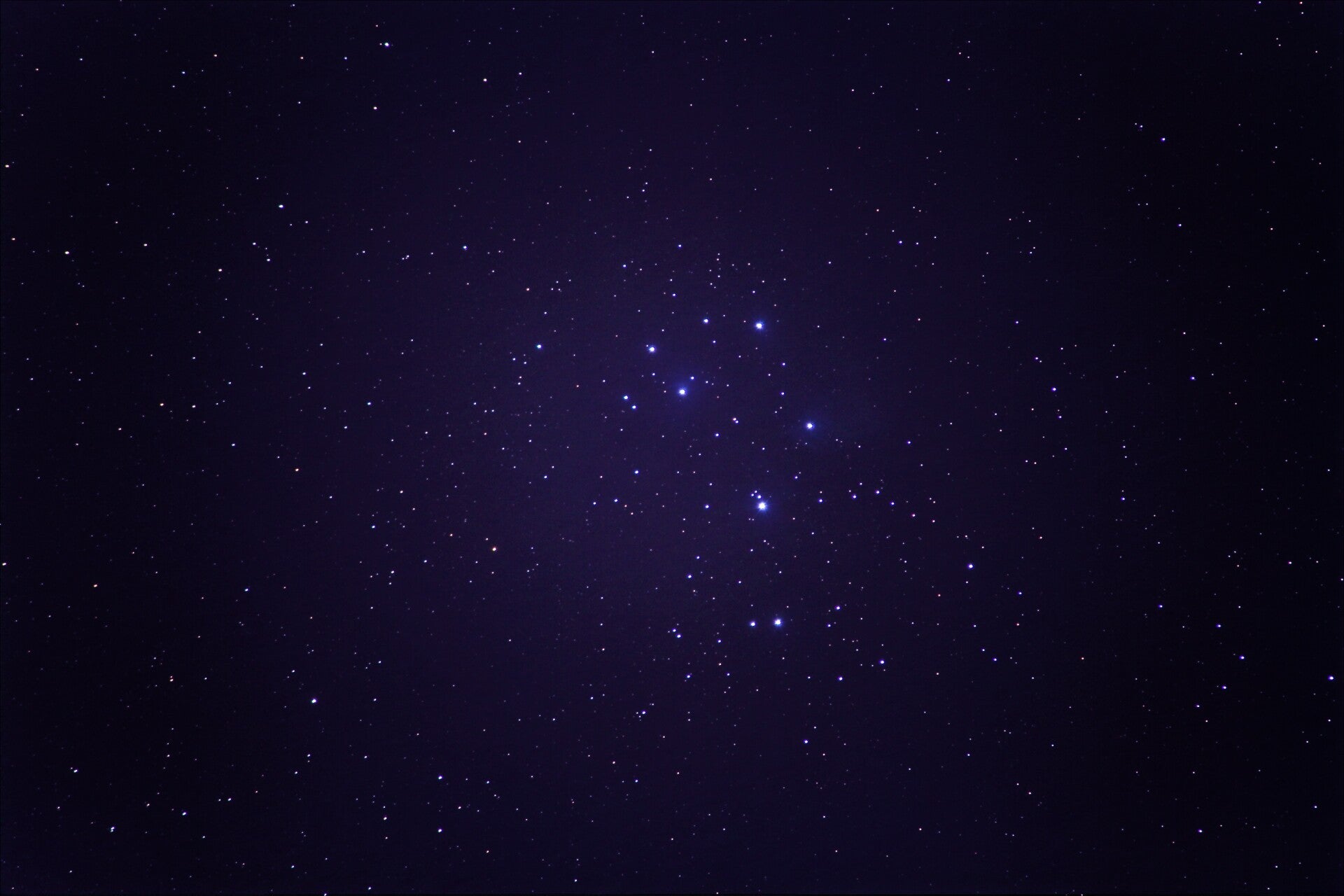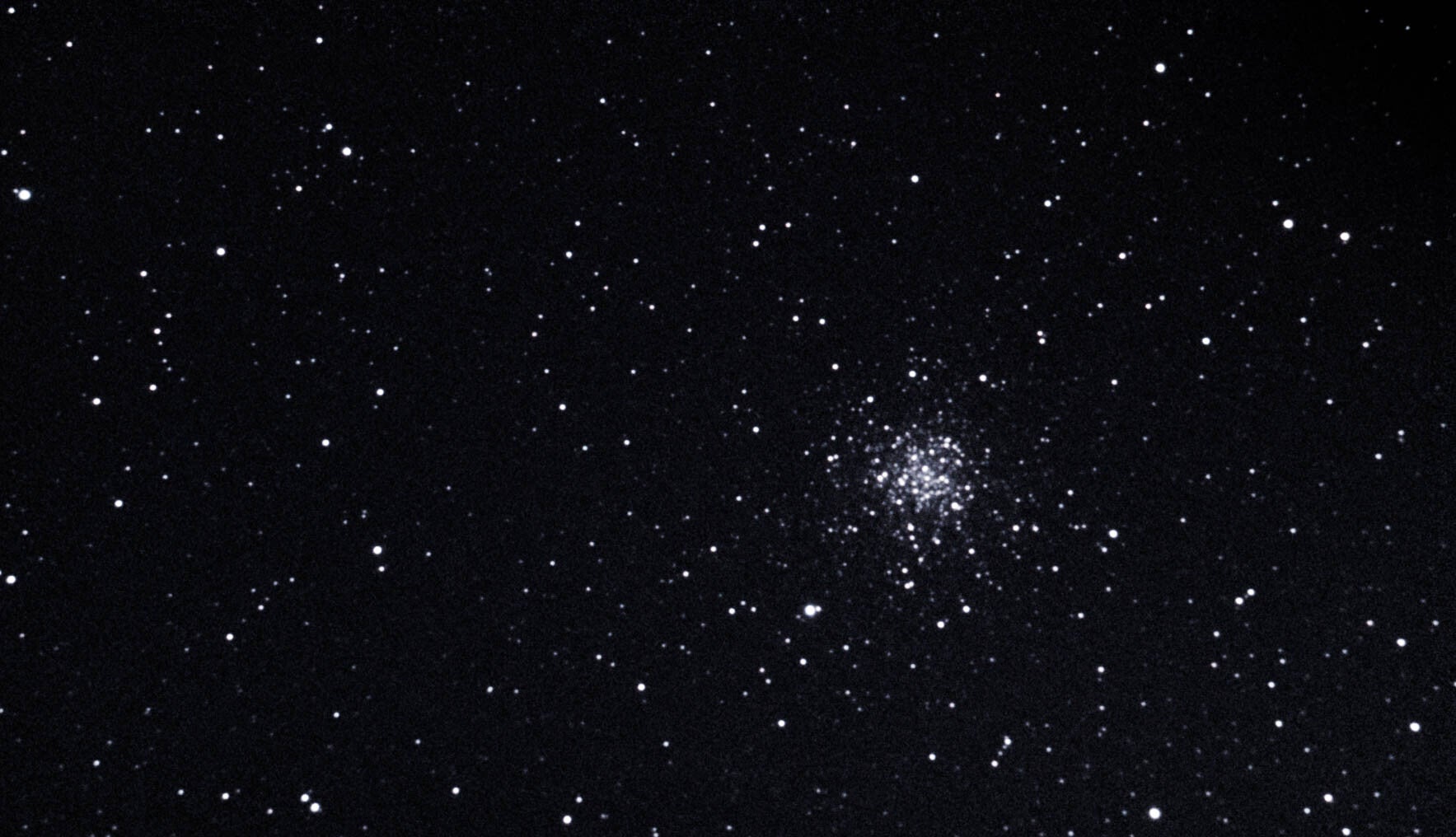Star Clusters
In astronomy we have two types of star clusters: open star clusters and globular clusters.
Open star clusters are irregular in shape but the stars in any of these clusters have similar ages and compositions since they will have formed from a single interstellar dust and gas cloud. These clusters are mainly located in the spiral arms of our Galaxy and therefore may be found in the regions of the Milky Way. They vary greatly in the number of stars in them.
Globular clusters are dense spheres of stars containing hundreds of thousands, sometimes millions, of stars, mostly concentrated at the centre. They are old, having been formed very early in the history of our Galaxy. They are not found in our Galaxy’s spiral arms but rather around the centre of the Galaxy, although some are also located far out in the so-called 'galactic halo'.

The Pleiades (M45)
Exposure: 13m 20s (32 frames of 25s each), gain 280-320. Equipment: Sigma 300mm f/4 APO telephoto lens attached to a ZWO ASI385MC. Date: 14-Nov-2020 19:16 UTC Location: Santa Venera.© Mario Aloisio
At a distance of just 444 light-years, this beautiful cluster of stars is so prominent that it is mentioned in the Bible (Book of Job), in the literature of Hesiod and Diodorus, and in many other sources throughout the world. Its visibility has been used by many cultures to signal the start or end of an agricultural season.

The White Rose Cluster aka Caroline's Cluster (NGC7789) Exposure: 49 frames of 10 seconds each (approx. 8 minutes). Equipment: Tamron 70-300mm f/4-5.6 lens (60mm objective) set at 300mm, coupled to a ZWO ASI 385MC. Date: 28-Dec-2019 18:18 UTC Location: Santa Venera. © Mario Aloisio

Globular Cluster M56 in constellation Lyra
Exposure: 4m 30s (45 frames of 6s each) Equipment: Sky-Watcher 150mm f/5 Newtonian, ZWO ASI 385MC, prime focus Date: 8-Oct-2020 20:41 UTC Location: Santa Venera. © Mario Aloisio
The Double Cluster (NGC 869 & NGC 884) in the constellation of Perseus
Exposure: 4 minutes (stack of 4 frames) Equipment: Home-built 127mm f/6 achromatic refractor, Canon EOS 400D
Date: 28-Dec-2016 Location: Santa Venera. © Mario Aloisio
These twin star clusters were once thought to be relatively bright individual stars and were therefore given the names h and ᵡ (Chi) Persei, which are still being used. Both visible to the naked eye, they lie at a distance of about 7,500 light years. The Greek astronomer Hipparchus catalogued them (as a patch of light in Perseus) as early as 130 BCE.

The Beehive Open Star Cluster (M44, aka as Praesepe) in constellation Cancer.
Exposure: 9m 15s (stack of 15 frames), ISO 400 Equipment: Sigma 300mm f/4 APO telephoto lens, Canon EOS Kiss x7i (700D) Date: 23-Feb-2022 19:26 UTC Location: Santa Venera. © Mario Aloisio


Globular Cluster M13 in constellation Hercules
Exposure: 3m 20s (20 frames of 10s each) Equipment: Sky-Watcher 150mm f/5 Newtonian, ZWO ASI 385MC, prime focus Date: 29-Sep-2020 19:46 UTC Location: Santa Venera. © Mario Aloisio
Create Your Own Website With Webador